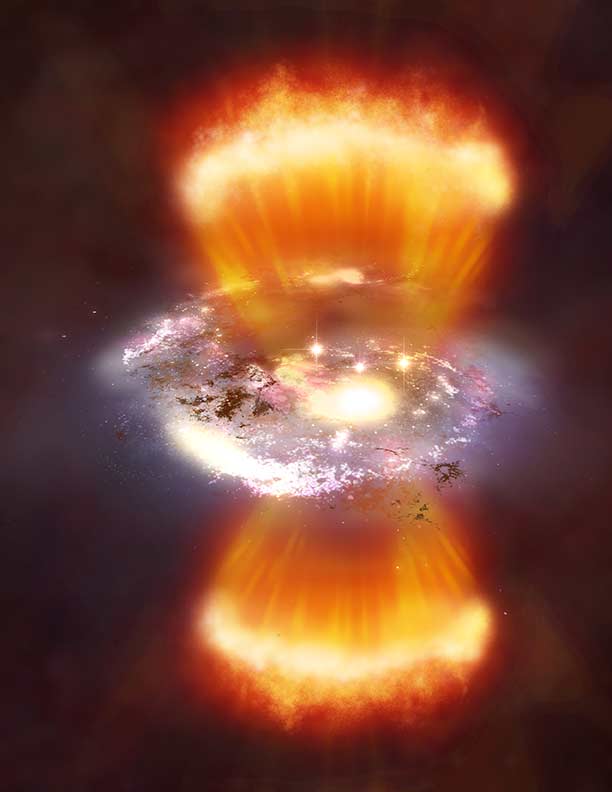Whopping Celestial Baby Boom Revealed in Early Universe

A second look at a group of massive young galaxies 11billion light-years away has revealed these juvenile giants in the throes of acelestial baby boom, birthing stars at an astonishing scale and rate.
The new glimpse of such a productive early universe ? seenas it looked 3 billion years after the BigBang ? may change the way scientists think about star formation.
The new data came courtesy of the European Space Agency?s HerschelSpace Observatory, an orbiting satellite equipped with the largest mirrorever built for a space telescope.
"These measurements have revealed the new population ofgalaxies to be hotter than expected, due to stars forming far much more rapidlythan we previously believed," researcher Scott Chapman of the Institute ofAstronomy in Cambridge, England, said in a release.
Previous observations had revealed the young galaxies, but theirlight in the visible spectrum was very faint, obscured by clouds of gas anddust within which the newly formed stars were being born. [See an illustrationof the stellar baby boom]
This cosmic dust is much brighter at the longer, far-infraredwavelengths of light observed by the Herschel satellite.
"With the data we had before, we couldn't tell exactlywhere the infrared light from these galaxies comes from," said Rob Ivison,a professor at the University of Edinburgh. But using the instruments aboard Herschel,Ivison said, "we can see that this is the signature of starformation."
Get the Space.com Newsletter
Breaking space news, the latest updates on rocket launches, skywatching events and more!
The Herschel observations focused on about 70 galaxies in theconstellation of Ursa Major. The data reveal spectacular rates of starformation, far higher than anything seen in the present-day universe, andindicate the young galaxies possess large reservoirs of gas that will power thestar formation for hundreds of millions of years.
With the new discovery, the astronomers have provided a muchmore accurate census of some of the most extreme galaxies in the universe atthe peak of their activity. [Top 10Star Mysteries]
"It was amazing and surprising to see the observationsuncover such a dramatic population of previously unseen galaxies," said IsaacRoseboom, a research fellow at the University of Sussex.
Future observations will investigate the details of thegalaxies' power source and try to establish how they will develop once theirintense bursts of activity come to an end.
The results are presented in a special edition of thejournal Monthly Notices of the Royal Astronomical Society.
- Top 10 Star Mysteries
- Video ? The Herschel and Planck Missions
- Spectacular Nebulas in Deep Space
Join our Space Forums to keep talking space on the latest missions, night sky and more! And if you have a news tip, correction or comment, let us know at: community@space.com.

Space.com is the premier source of space exploration, innovation and astronomy news, chronicling (and celebrating) humanity's ongoing expansion across the final frontier. Originally founded in 1999, Space.com is, and always has been, the passion of writers and editors who are space fans and also trained journalists. Our current news team consists of Editor-in-Chief Tariq Malik; Editor Hanneke Weitering, Senior Space Writer Mike Wall; Senior Writer Meghan Bartels; Senior Writer Chelsea Gohd, Senior Writer Tereza Pultarova and Staff Writer Alexander Cox, focusing on e-commerce. Senior Producer Steve Spaleta oversees our space videos, with Diana Whitcroft as our Social Media Editor.









